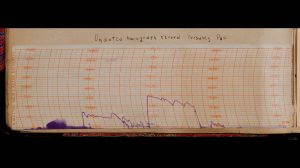by Laura Williams, Visitor Services Coordinator
November is National Aviation History month, and the MHS is the perfect place to commemorate with our many collection items surrounding the history of flight! While we’ve been stuck on the ground for much of this year, take a look back and see how the history of aviation changed our country and the rest of the world.
Previously featured as one of our ‘Objects of the Month’ on the 100th anniversary of the first flight in 2003 was a series of letters regarding the successful venture into the skies. These letters are housed in the MHS’s Godfrey Lowell Cabot collection, and include correspondence with the civil engineer Octave Chanute, who served as an advisor to Orville and Wilbur Wright. These letters describe the technical properties of the plane and the details of the four short flights that the “Flyer” was able to make in December 1903. You can read more about the MHS records of the first flight and sources for further research here.
Also included in the Godfrey Lowell Cabot collection are photographs of some of the Wright brothers’ first experiments with flight. These images in particular were taken by the previously mentioned Octave Chanute, and besides the Wright brothers’ own photographs these images are the only other known photographic records of the flight experiments. Massachusetts natives Godfrey Lowell Cabot and his brother Samuel were both avid aviation pioneers and did much for the advancement of aviation. Their incredible family history and influence is described in greater detail here.

Another interesting piece of aviation history from our collections is this barograph record of a flight circa early 1915 most likely made by Frazier Curtis at a French aviation school at Pau.

This piece of data reports the height and endurance of a flight which was used to approve pilots at Pau for active duty. This piece was also previously featured as one of our ‘Objects of the Month’, and its full description can be found here. Notably, Frazier Curtis spent much of his life working to form a flying corps of American pilots, rather than volunteering as individuals, in British and French armies. Before his death in 1940, this barographic record was added into a scrapbook of letters, photographs, newspaper clippings and magazine articles that, “documented his unsuccessful efforts to fly for Britain or France, and his small but important role in founding the Lafayette Escadrille/Flying Corps and promoting aviation training and military preparedness at home.”

